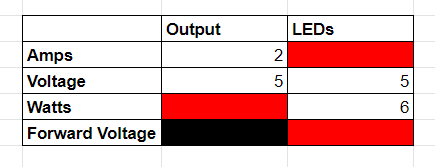I have a USB powered LED curtain which is attached to a smart plug so I can set it to come on at certain times etc. The trouble is there are multiple "modes" (flashing, alternating etc.) which i'm not interested in but it won't stay set to always on and I have no use for the other modes.
My plan is to bypass the circuit board containing the chip, IR receiver, mode button etc by soldering the lights directly to a new USB connector so the lights are just constantly on when the smart plug is on.
The trouble i'm having is determining some of the values necessary to work out what resistor I would need to use. I have a ton of different resistors and a multimeter and I have done some reading on working out values for LEDs but none seem to refer to these really thin string light curtain type things which is where the confusion comes in.
Here are the values I have from the product specs:
I'm happy to experiment a little but since i'm basically a newbie i'm wary that I don't want to blow the lights or create any potential fire hazards.
Is someone able to quickly run me through what I need to measure/work out in order to determine the resistance needed please? I haven't done anything other than remove the circuit board cover so i'm able to take measurements while they are plugged in if that's any help.
Thanks in advance!

